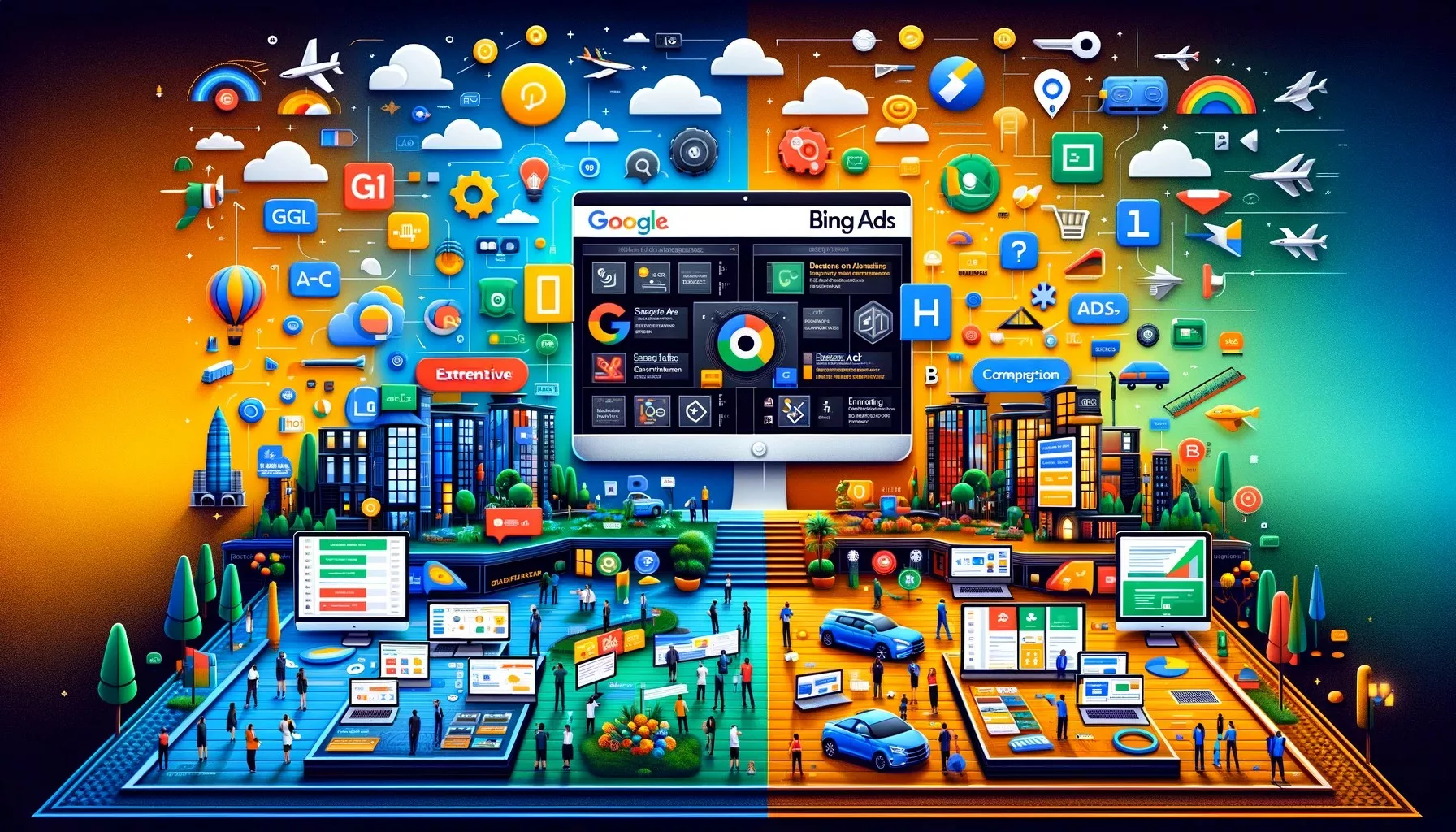Pay-Per-Click (PPC) advertising has become a cornerstone of digital marketing strategies, offering businesses a targeted and measurable way to reach their audience online. When it comes to PPC advertising, two major platforms dominate the market: Google Ads and Bing Ads. Both platforms offer unique features and advantages, but which one is right for your business? In this blog post, we’ll compare Google Ads and Bing Ads across various factors to help you make an informed decision.
Audience Reach:
- Google Ads: With over 90% of the global search engine market share, Google Ads provides access to a vast audience of potential customers. It reaches users across Google’s search network, display network, YouTube, and partner sites, offering unparalleled reach and visibility.
- Bing Ads: Although Bing has a smaller market share compared to Google, it still commands a significant portion of the search engine market, particularly in certain demographics and regions. Bing Ads can be particularly effective for targeting older audiences, as well as users in specific industries or geographical locations.
Cost and Competition:
- Google Ads: Due to its larger user base and higher competition, Google Ads tend to have higher costs per click (CPC) compared to Bing Ads. However, the increased competition also means that there’s potential for greater visibility and faster results for businesses willing to invest in Google Ads.
- Bing Ads: With lower competition and generally lower CPCs, Bing Ads can offer a more cost-effective advertising solution, especially for businesses with smaller budgets. Additionally, Bing Ads often have less stringent ad policies and restrictions compared to Google Ads.
Ad Formats and Targeting Options:
- Google Ads: Google offers a wide range of ad formats, including search ads, display ads, video ads, shopping ads, and more. Its robust targeting options allow advertisers to reach their audience based on keywords, demographics, interests, location, and device types.
- Bing Ads: While Bing Ads may have fewer ad formats compared to Google Ads, it still provides ample opportunities for advertisers to connect with their target audience. Bing Ads offers similar targeting options, including keyword targeting, demographic targeting, and location targeting.
Performance and Conversion Rates:
- Google Ads: Given its larger user base and extensive reach, Google Ads often deliver higher traffic volumes and conversion rates for businesses. It’s particularly effective for businesses in competitive industries or those targeting a broad audience.
- Bing Ads: While Bing Ads may not generate as much traffic as Google Ads, it can still deliver valuable leads and conversions, especially at a lower cost. Businesses in niche markets or with specific audience demographics may find that Bing Ads offer higher conversion rates and a better return on investment.
Conclusion: Ultimately, the choice between Google Ads and Bing Ads depends on your business objectives, target audience, budget, and advertising goals. For businesses looking to maximize their reach and visibility across a broad audience, Google Ads may be the preferred choice. However, for businesses with limited budgets or targeting specific demographics, Bing Ads can offer a cost-effective alternative with potential for high conversion rates. Consider your unique needs and objectives carefully when choosing between these two PPC platforms to ensure optimal results for your business.
